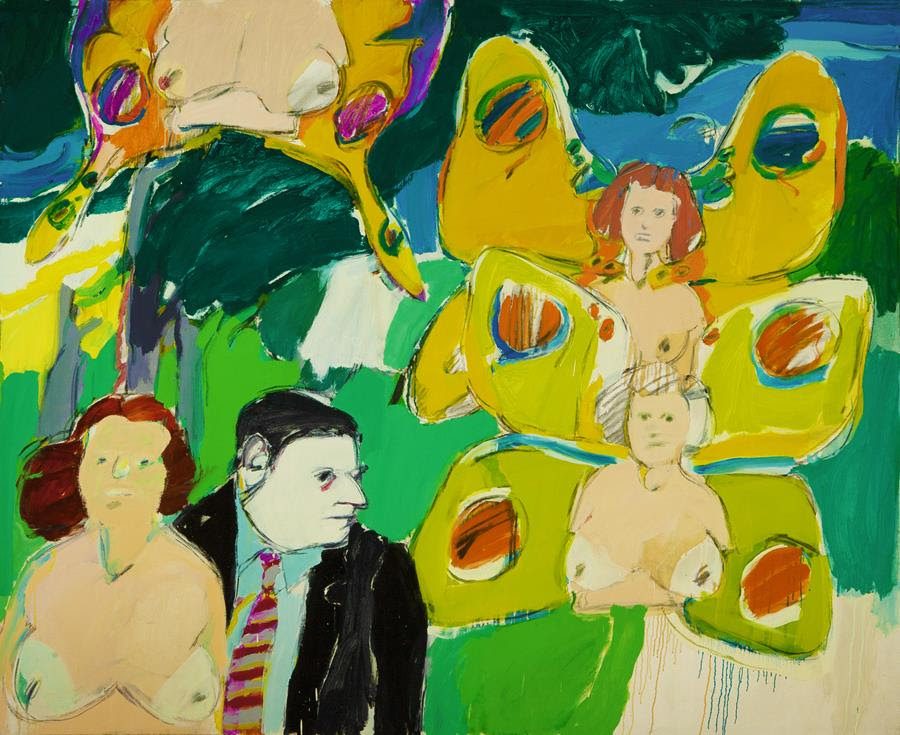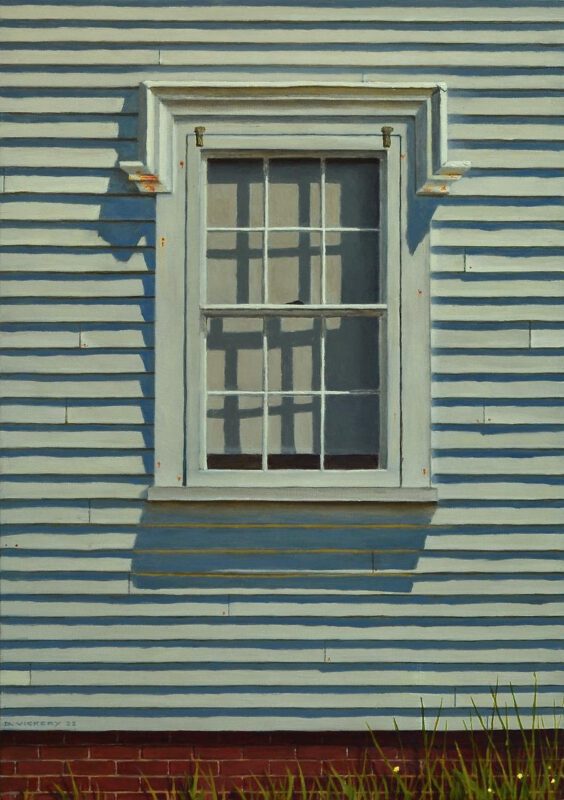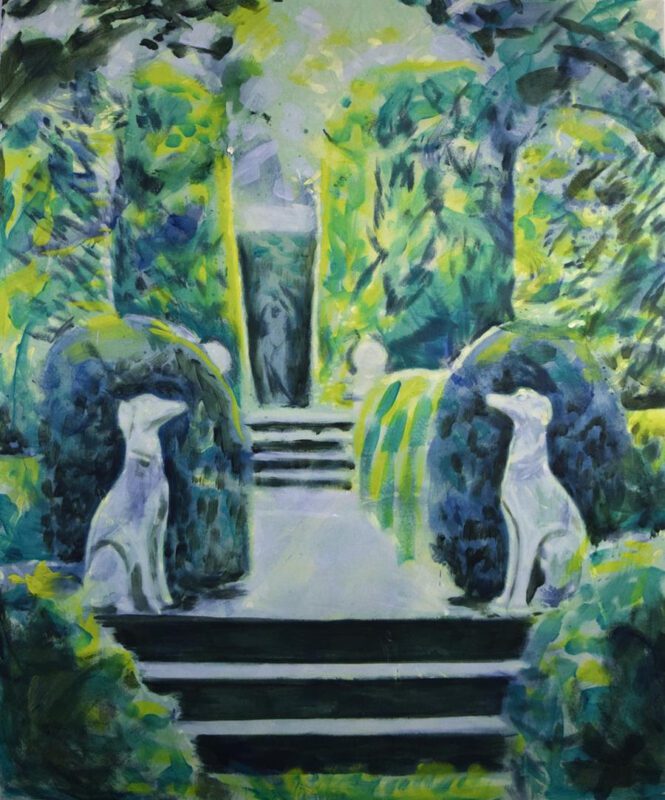
During May, Dowling Walsh Gallery will host three exhibitions. An opening reception will be held from 4 to 7 p.m. May 6 outside behind the gallery. Masks are encouraged while inside the gallery.
Dowling Walsh Gallery is at 365 Main St. in Rockland. The gallery is open from 10 a.m. to 5 p.m. Tuesday through Saturday and by appointment on Sundays and Mondays. Visit www.dowlingwalsh.com, or call 207-596-0084 for more information.
Neil Welliver (1929-2005)
“Chrysalis | 1954-1964”
May 6 to June 25
Neil Welliver was born in 1929 and raised in rural Millville, Pennsylvania, between two world wars and among forested hillsides and nearby streams. He received his initial art training at the Philadelphia Museum School of Art, with access to the museum’s encyclopedic collection of European and American art. There, he would have also encountered avant-garde works by Marcel Duchamp incorporating elements of accident and chance.
His first teaching job was with Cooper Union in New York where his own education continued and intensified through the emergence of Abstract Expressionism and the radical abstract paintings of Jackson Pollock, Franz Kline, Joan Mitchell, and especially Willem De Kooning. De Kooning’s paint slathered women — primal earth goddesses — confronted a startled public including young artists like Welliver.
After teaching at Cooper Union, Welliver joined the faculty at Yale under the venerable German expatriate, Josef Albers. Welliver seems to have rebelled against Albers’ highly structured geometric abstraction, most evident in his teacher’s ongoing “Homage to the Square” series. But he also absorbed lessons of color, light and discipline.
He remained at Yale until the mid-1960s, when he took a position with the University of Pennsylvania in Philadelphia, until retiring in 1989. Moving full-time to a large tract of land in Lincolnville, Maine, in 1970, the artist began to eliminate all traces of human presence. These wall-size landscapes are based on numerous smaller drawings and oil studies created en plein air, that he scaled up and rendered back in his barn-like studio.
Noted art critic Robert Hughes described these works as “among the strongest images in modern American art.” Welliver painted nearly every day, including winter excursions into the isolated, northern Maine woods — often with a 70-pound backpack full of paints and sketchpads — until his death in 2005.
Welliver’s little known and seldom exhibited early paintings in the current exhibition were mostly created during the 1950s through the early 1960s when he was studying and teaching at Cooper Union and Yale University. There is abundant, uncontrolled joy and humor in these raucous, good-natured paintings — a tuba player tooting her own horn. Tie-wearing fellow faculty and friends set in New Haven, enjoying their own get-togethers on loosely manicured, suburban lawns. Skeletons skinny-dipping in a sylvan pool — a comment on academic pastimes and purposes, we wonder? The color harmonies are not so much based on Albers’ color theories as having escaped from them. Paint handling is loose, celebrating accidental runs and drips, acknowledging how paintings are born. Indeed, the wild, uninhibited paintings in this rare look at the artist’s first exuberant body of work anticipates much that will define his later landscapes of the deep Maine woods. How boundless energy and natural processes are chaotic and essential. Welliver simply and persistently celebrates the act of painting; how paint — this colored mud — behaves on canvas.
The early paintings are Welliver’s manifesto of independence and escape — his artistic metamorphoses from student to teacher to artist. Abstraction and representation, nudes and skeletons, greet one another, gather in one place as fragile vehicles, unfurled butterfly wings traversing oceans, continents. And, to where poetry survives, according to W.H. Auden, “in the valley of its making.”

David Vickery
“Casting Shadows”
May 6 to 28
David Vickery is known for his precise realism and exploration of light and space. His subjects include both interiors and the landscape around him. His recent works focus on architectural elements, showing texture and repetition of pattern that reflect a passage of time.
Based in Cushing, Maine, he has been working from his studio there since 1991. His work has been exhibited at the Farnsworth Museum, Rockland; College of the Atlantic, Mount Desert; Sherry French Gallery, New York; and the Center for Maine Contemporary Art, Rockland.

“Plyos”
Tessa Greene O’Brien, Tollef Runquist, and Jamie Gray Williams
May 6 to 28
“Plyos” is a group exhibition of paintings by Tessa Greene O’Brien, Tollef Runquist and Jamie Gray Williams presented in tandem with Neil Welliver’s early figurative paintings. These artists utilize bold colors, gestural techniques and loose approaches to representing figures and spaces. The Greek roots of the word plyo refer to an increase, a pushing of limits, just as these painter’s test the limits of the canvas borders with implied action, layers of movement folding in on themselves. In these works color becomes a force and subject as important as the imagery. They capture the viewer, allowing us to fall into the work and be consumed.
Categories: Artists Reception, exhibitions, gallery, openings, Rockland, shows
Tags: art

